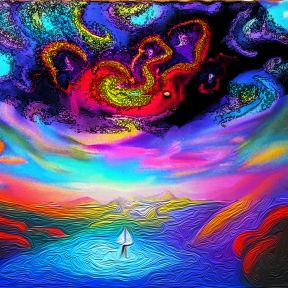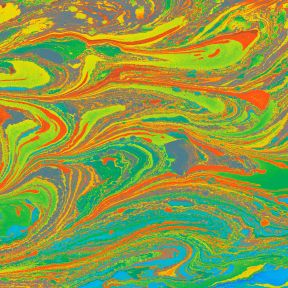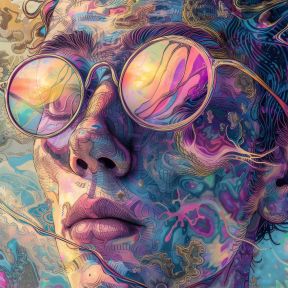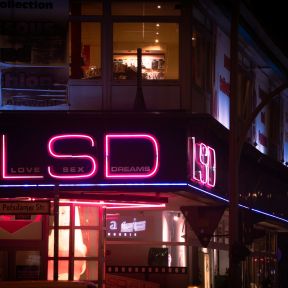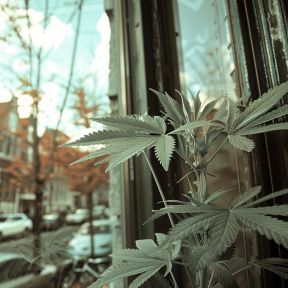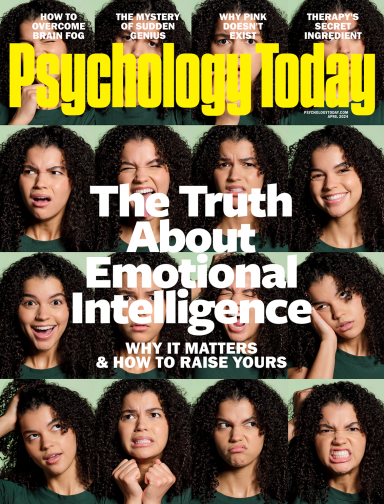
Psychedelics
Psychedelic agents are substances—most of them naturally derived from plants—that change people’s mental states by temporarily altering their perception of reality. As a result, the substances can lastingly induce changes in thoughts and feelings.
Plant-derived hallucinogens such as psilocybin, mescaline, and ibogaine have been safely used, primarily in traditional cultures, since ancient times. Typically, they are consumed ritualistically in healing ceremonies and religious rites to facilitate communication with the gods, all under the guidance of experienced elders.
Since the 1970s, psychedelic substances have been illegal in the U.S. But starting the 1990s, at first quietly, then openly, medical interest in psychedelics has been resurgent. Renewed interest in the healing properties of such agents has led to the so-called “psychedelic renaissance,” in which many such substances are being studied for a wide range of conditions. A number of psychedelics are now under active clinical investigation for the treatment of disorders including PTSD, treatment-resistant depression, anorexia nervosa, cocaine and opioid addiction, obsessive-compulsive disorder, Alzheimer’s and other dementias, end-of-life terrors, and even stroke recovery.
The resurgence of interest can be attributed to the ability of the substances to induce lasting benefits with a remarkably short course of treatment—two or three doses. This time around, however, it is recognized that the presence of a trained and supportive therapist in a safe and comfortable environment is essential for obtaining the benefits of psychedelic agents. The U.S. Food and Drug Administration has indicated that, pending the outcome of ongoing clinical trials, it is willing to approve the use of psychedelic-assisted psychotherapy. Psychedelic-assisted psychotherapy promises a brightened outlook for an array of psychiatric afflictions and drug treatment delivered with compassion.
Psychedelic-assisted psychotherapy (PAP) is proving to work for so many conditions, researchers believe, because the substances target the brain region central to so many brain operations and involved in so many disorders—the prefrontal cortex—and revamp its structure.
Drugs that induce the psychedelic experience share a molecular mechanism of action—they activate a specific serotonin receptor (5-HT2A) on a specific subset of neurons in the cerebral cortex, cells that are essential for integrating incoming information to create our experience of reality. They cause the neurons to fire in a very disorganized way, messing up all the inputs. They also vastly expand the formation of synapses, intensifying neural plasticity, which many consider key to their therapeutic action. Neural plasticity is the portal to possibility and change.
Significantly, as psychedelics stimulate hyperconnectivity between sensory brain regions, they relax connectivity in the so-called default mode network, the interconnected brain areas responsible for self-referential thought and the “me” aspect of self. The experience is felt as ego dissolution, a significant part of the psychedelic experience..
Psychedelics pharmacologically return the brain to what can be considered neural childhood. The effects mimic conditions during neurodevelopment, creating the optimal brain state for environmental input to have enduring effects. Experientially, this translates into a renewed, often very positive, sense of possibility.
Also, psychedelics increase disorder in the way brain cells operate, which has the effect of prioritizing incoming sensory input over existing beliefs, encouraging novel responses to incoming information. That may, for example, keep those who experience depression from becoming stuck in repetitive negative thought patterns.
Psychedelic drugs have the capacity to change people’s perception of reality. Patients find the experience powerful and full of meaning. Dissolution of the sense of ego makes people feel at one with the world, and the intensity of the experience makes it highly meaningful to people. The drugs act primarily on serotonin receptors. Not only is serotonin involved in processing sensory information, it also influences our emotional responses, such as fear, excitement, and empathy.
There are likely many ways by which the drugs improve mental health. They stimulate the growth of new neurons, promoting learning. They heighten the impact of new experiences over old memories. And the ego dissolution effect of psychedelics enables people to see their thoughts and life from a less subjective, more objective standpoint. Ego dissolution may provide the link between psychedelic action and therapeutic effects in the brain. The effect of psychedelics on ego dissolution is similar to the effect achieved by long-time practitioners of meditation.
Under the influence of psychedelic drugs, the perception of our familiar self vanishes. People describe such ego dissolution as a diminished sense of self and an increase in the feeling of being at one with the universe, an experience felt as pleasurable and enriching. The sense of self normally arises from the constant synthesis of sensory input your brain is doing every second of every day, with the help of the neurotransmitter serotonin. (You experience your sense of self as a coherent whole, but it is actually constantly being updated by incoming sensory information.)
The distortion of our subjective experience of self is a core part of the psychedelic experience, which also includes an increase in emotional empathy, the ability to respond to the mental state of others. People report greatly enhanced sociability, feel as though they have “taken off the mask they wear around others,” or that the personal “wall” that separates them from others has fallen. Because our ego separates us from others, ego dissolution causes people to feel much closer to others, whether they know them well or not.
Researchers and clinicians generally speak of “classic psychedelics" and non-classic agents. Classic psychedelics are derived from plants found in nature and include psilocybin, dimethyltryptamine (DMT), mescaline, and LSD, which is derived from naturally occurring ergotamine. All have a long history of safe use in many cultures, typically in religious ceremonies and in the presence of spiritual guides. Non-classic psychedelics include manipulated molecules such as MDMA and ketamine.
Psilocybin is a naturally occurring compound in some species of mushrooms found in tropical regions and is undergoing clinical trials for the treatment of people with resistant depression. It is also in the early stages of testing for opioid addiction. Alzheimer's disease, post-traumatic stress disorder (PTSD), post-treatment Lyme disease syndrome (formerly known as chronic Lyme disease), anorexia nervosa, and alcohol use in people with major depression.
MDMA (3,4-methylenedioxymethamphetamine), also called Ecstasy or Molly, is a synthetic compound that has successfully undergone confirmatory Phase 3 clinical trials for the treatment of moderate to severe PTSD. The manufacturer is currently seeking new-drug approval from the FDA for MDMA-assisted psychotherapy.. MDMA is not a classic psychedelic, but it influences the release of serotonin and other neurotransmitters and alters perception. Studies indicate that MDMA reduces hyperactivity in the amygdala and increases connectivity between the amygdala and the hippocampus so that memories can be processed and safely stored without constantly intruding on the present. MDMA also releases the hormone oxytocin, boosting the sense of social connectedness. MDMA is also being tested for use as a treatment for depression, anxiety, and substance use.
LSD, or lysergic acid diethylamide, is derived from a fungus. It is currently under study as a treatment for alcoholism, anxiety disorders, Alzheimer’s disease, and other dementias.
Ketamine is not a classic psychedelic but a synthetic agent with a long history of safe use as an anesthetic agent in human and veterinary medicine. It produces dissociation and distortions of sights and sounds. Ketamine does not act on serotonergic 5-HT2A receptors. It is currently used in special clinics as a rapid-acting antidepressant.
Psychedelic-assisted therapy is on the horizon. Because psychedelic agents present vivid new information and enable patients to approach memories and feelings they were unable to process before, patients need good guides for interpreting the contents of their minds and integrating the insights into their lives. Even before the drug is administered, patients need to be in a soothing environment to maximize the efficacy of psychedelic agents—one that conveys complete safety, minimizes anxiety, and delivers preparatory therapy that sets expectations for the possibility of real benefit. Patients typically receive a moderate to large dose of psychedelic drug in each of two or three sessions spaced over several weeks.
All current legal administration of psychedelic drugs is conducted under the direct supervision of specially certified therapists. Importantly, researchers contend that it is the psychotherapy that transforms MDMA, psilocybin, and other hallucinogens from a novelty into a medicine.
Psychedelic drugs such as psilocybin, LSD, MDMA, and other hallucinogens are controlled substances under federal law and, by statute, are deemed to have no medical use and high potential for abuse. Possession of such agents is, in short, criminal. However, several states (such as Oregon and Colorado) and municipalities (Ann Arbor, Michigan; Denver, Colorado, for example) have approved ballot initiatives decriminalizing possession of certain hallucinogens.
Since the Millennium, however, psychedelic agents have been gathering the interest of researchers. Starting with Johns Hopkins, several American universities and research organizations have obtained approval from the Food and Drug Administration to study the medical use of hallucinogenic drugs, largely for the treatment of disorders that have resisted treatment. The drugs are administered in moderate to large doses in a specially soothing setting in the presence of a trained psychotherapist who also delivers psychotherapy.
Researchers argue that taking psychedelics is not a passive experience: The mindset of the patient matters. Taking the drug opens the mind; therapy helps people through the experience and guides them to do the necessary work of digesting the newly exposed information and, eventually, recalibrating their psychological reality. Therapy allows patients to explore and come to terms with challenging psychological material that is keeping them stuck. It also helps them reorganize their consciousness in the wake of the psychedelic experience.
To a considerable degree, the therapeutic value of the psychedelic experience hinges on the quality of the patient-therapist relationship. Therapists, who must receive special training and certification in the use of psychedelics, prepare patients for the experience by establishing a completely safe and trusting environment. They provide a reassuring presence even before the drug is administered, during the time it is active, and after the effects have worn off.
Always taking their cue from the patient’s needs and the nature of their uniquely individual experience, therapists guide them through the process. Therapists help patients revisit past events and emotions that have been problematic. They also conduct subsequent debriefing sessions to help patients consolidate insights and establish new ways of seeing themselves in relation to the world.
In clinical studies using standardized treatment protocols, drug effects may last for three to six hours, during which time a therapist is always present. The therapy session usually lasts for about six to eight hours. Each treatment session is usually followed by one or more standard therapy sessions in which the experience is discussed and integrated. After the completion of two or three treatment sessions, researchers have documented continued therapeutic gains over the next year.
Psychedelic drugs are non-addictive and have few negative cognitive effects. They do not impair memory, nor do they cause stupor or narcosis such as that seen with alcohol or heroin. Neither do they produce excessive stimulation like that experienced with cocaine or amphetamine. Used therapeutically under the guidance of a trained therapist, few drug-related adverse events have been reported in clinical trials. Many believe it is essential that the drugs be administered only by trained therapists in controlled settings in order to maximize benefits and minimize potential risks.
Wide-scale medical interest in psychedelics first arose in the 1950s and ’60s, and the agents were found to be notably safe, non-addictive, and of potential value for treating a wide range of psychiatric disorders. But by 1970, widespread recreational use of the agents led to a change of public policy, and psychedelic agents were banned, even for research use, first in the United States and then globally, deemed to have “no currently accepted medical use” and a high potential for abuse.


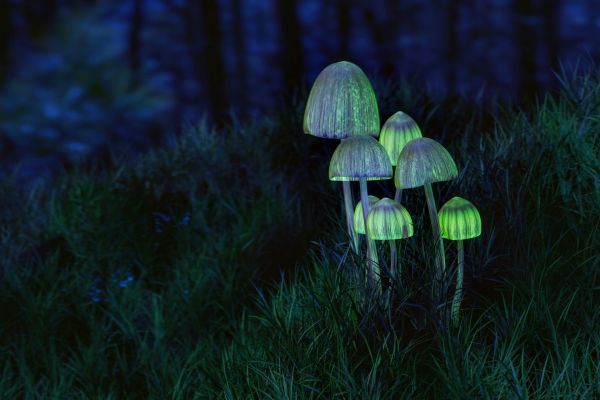


.jpg?itok=E1Ga7o4T)

